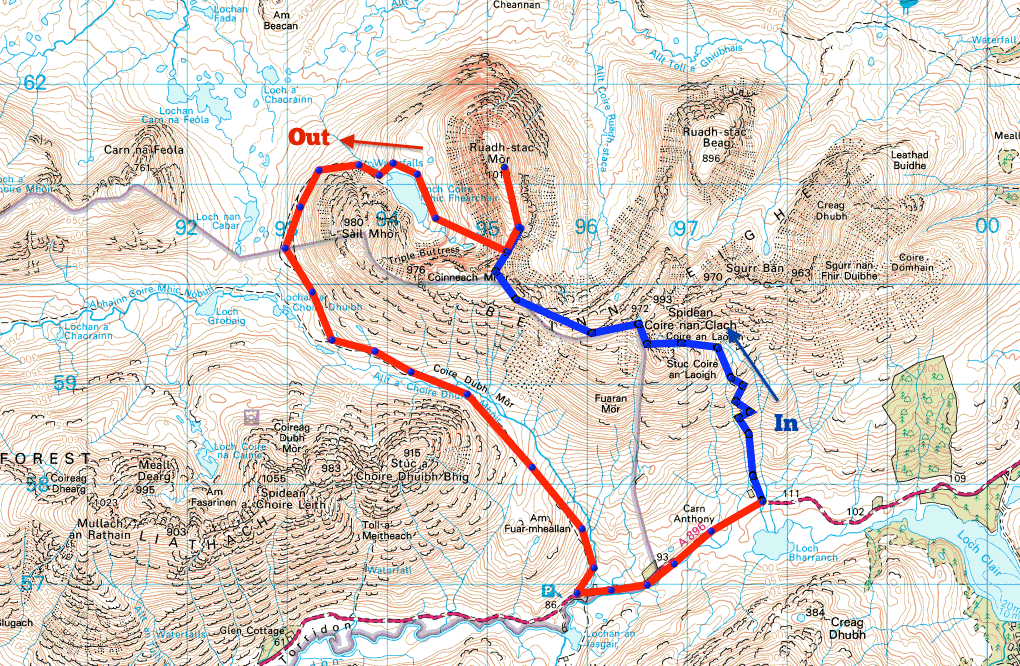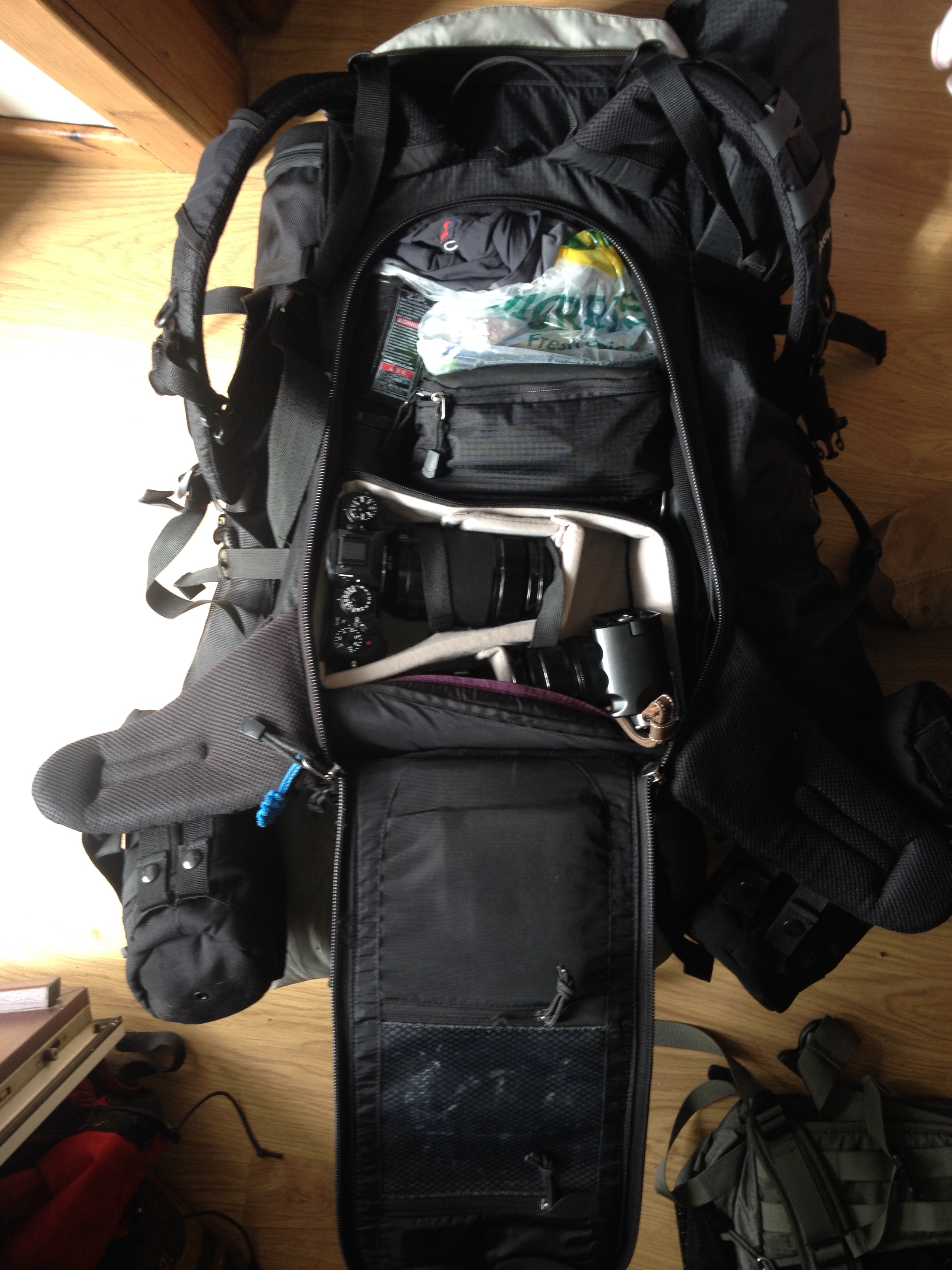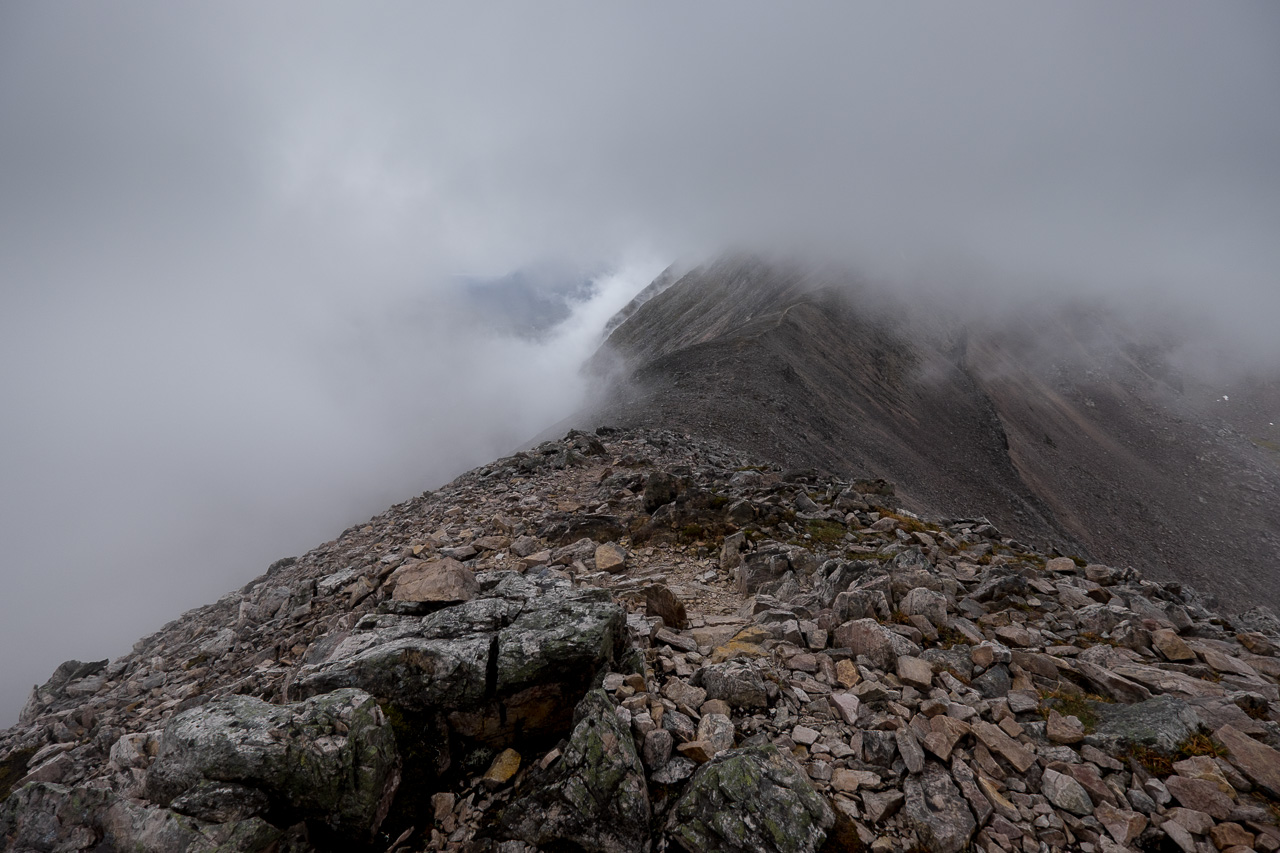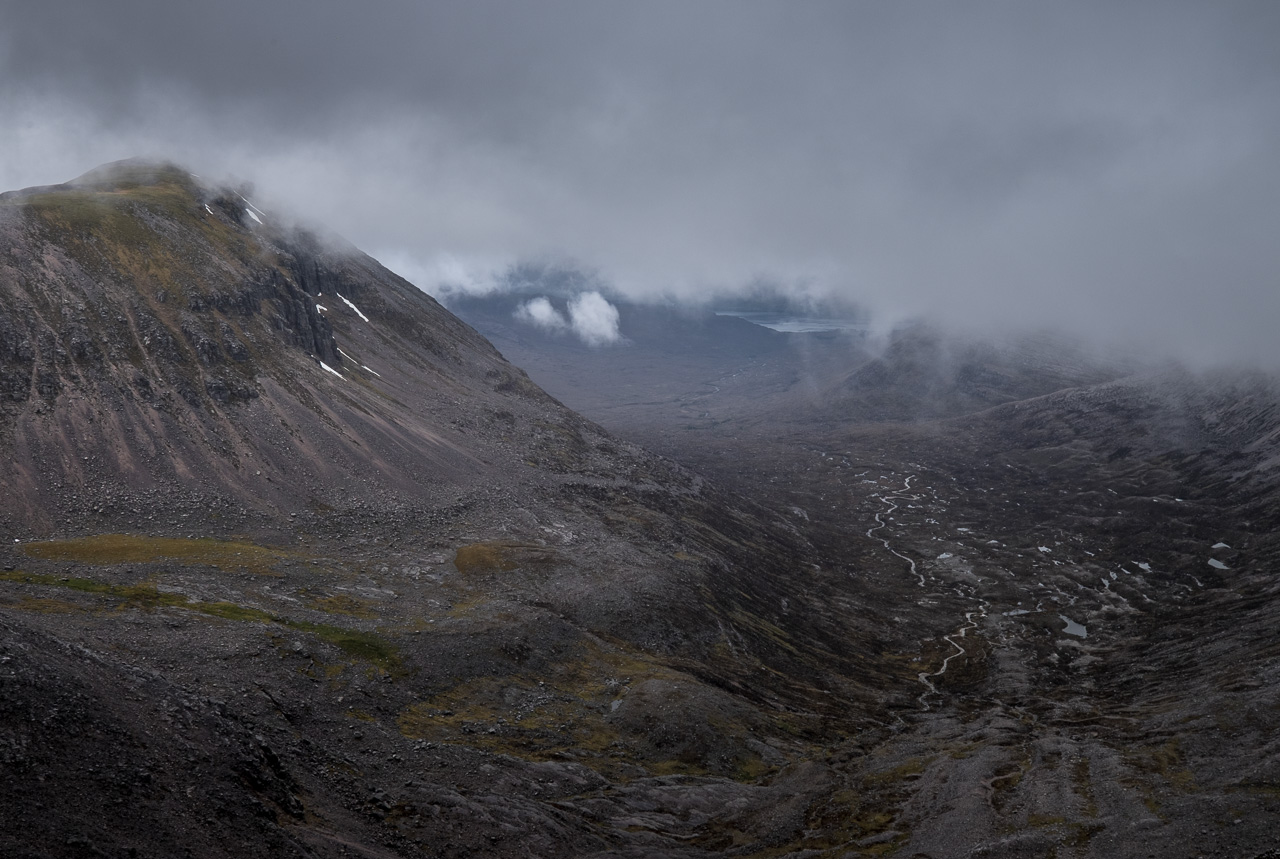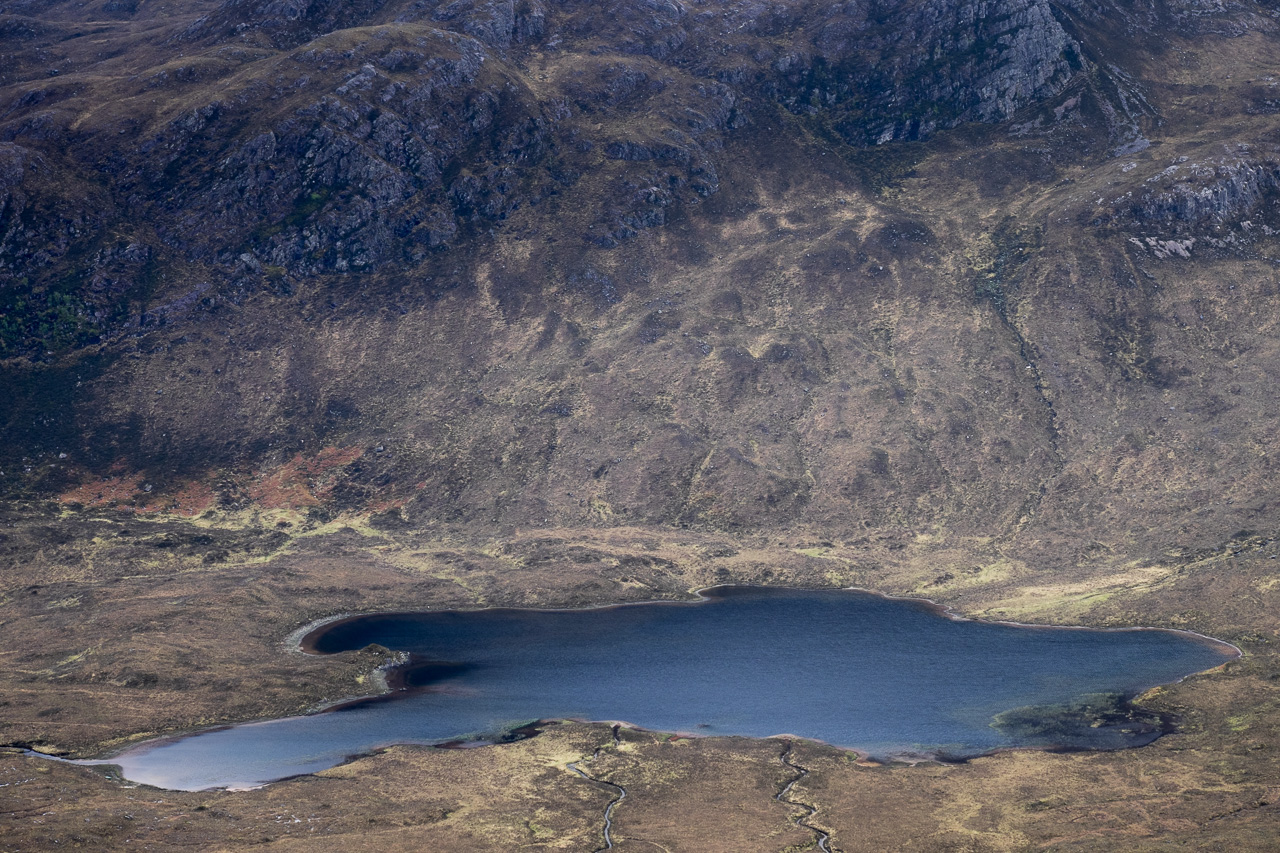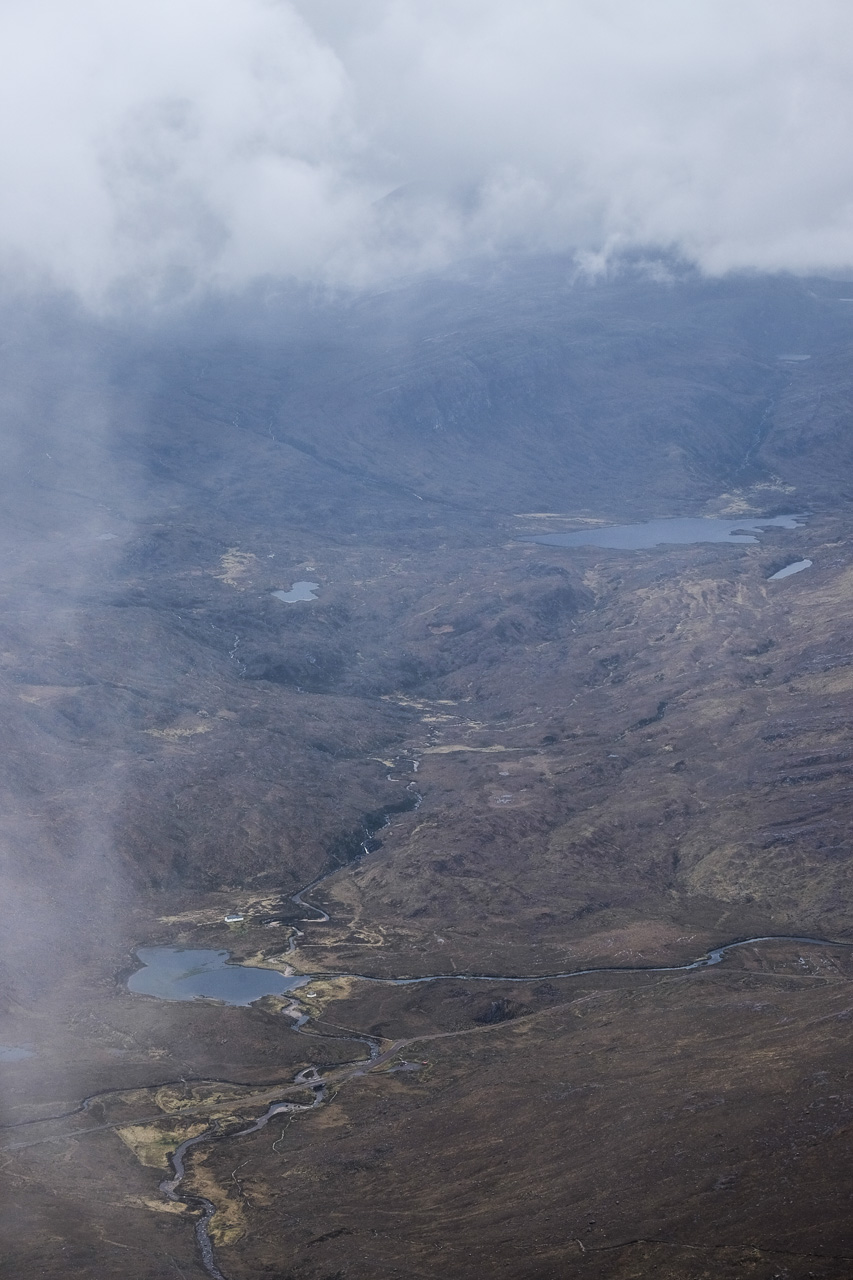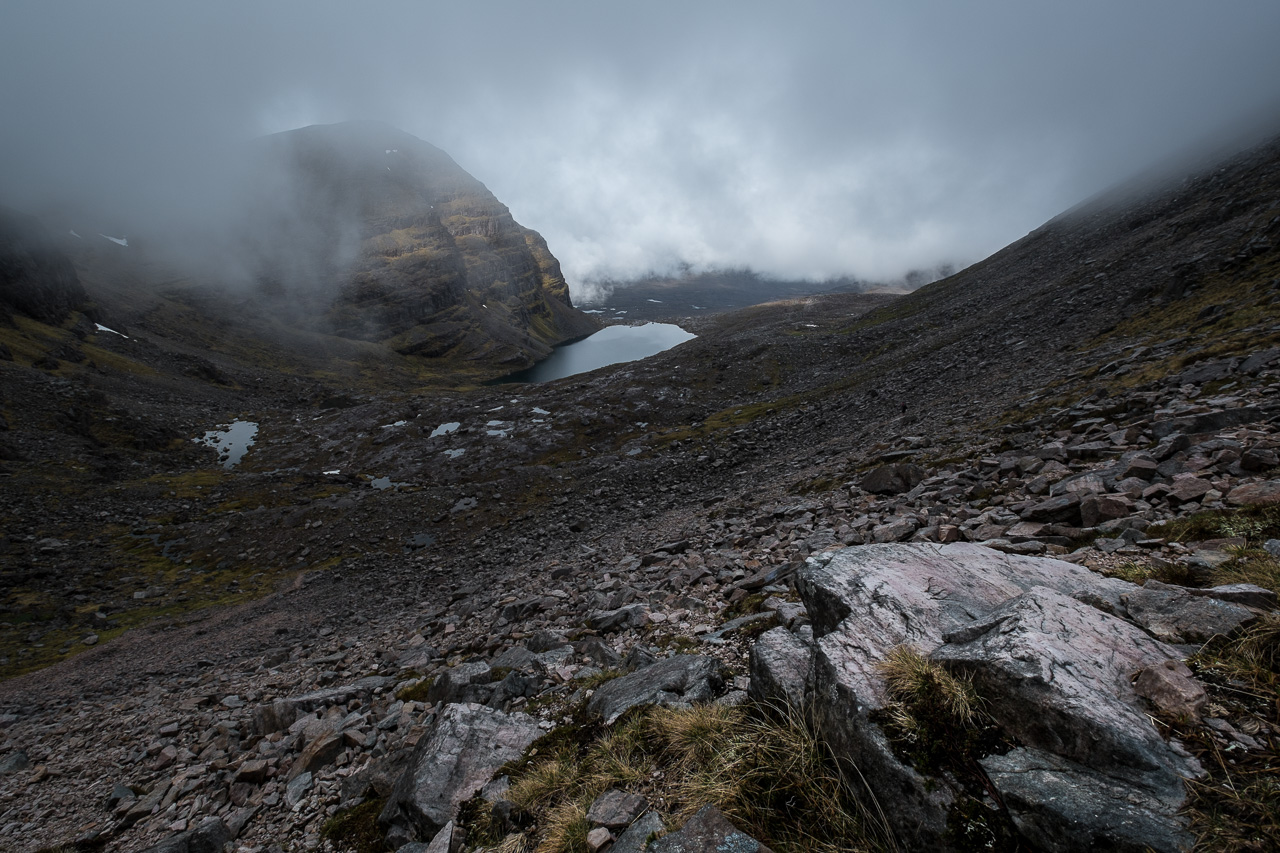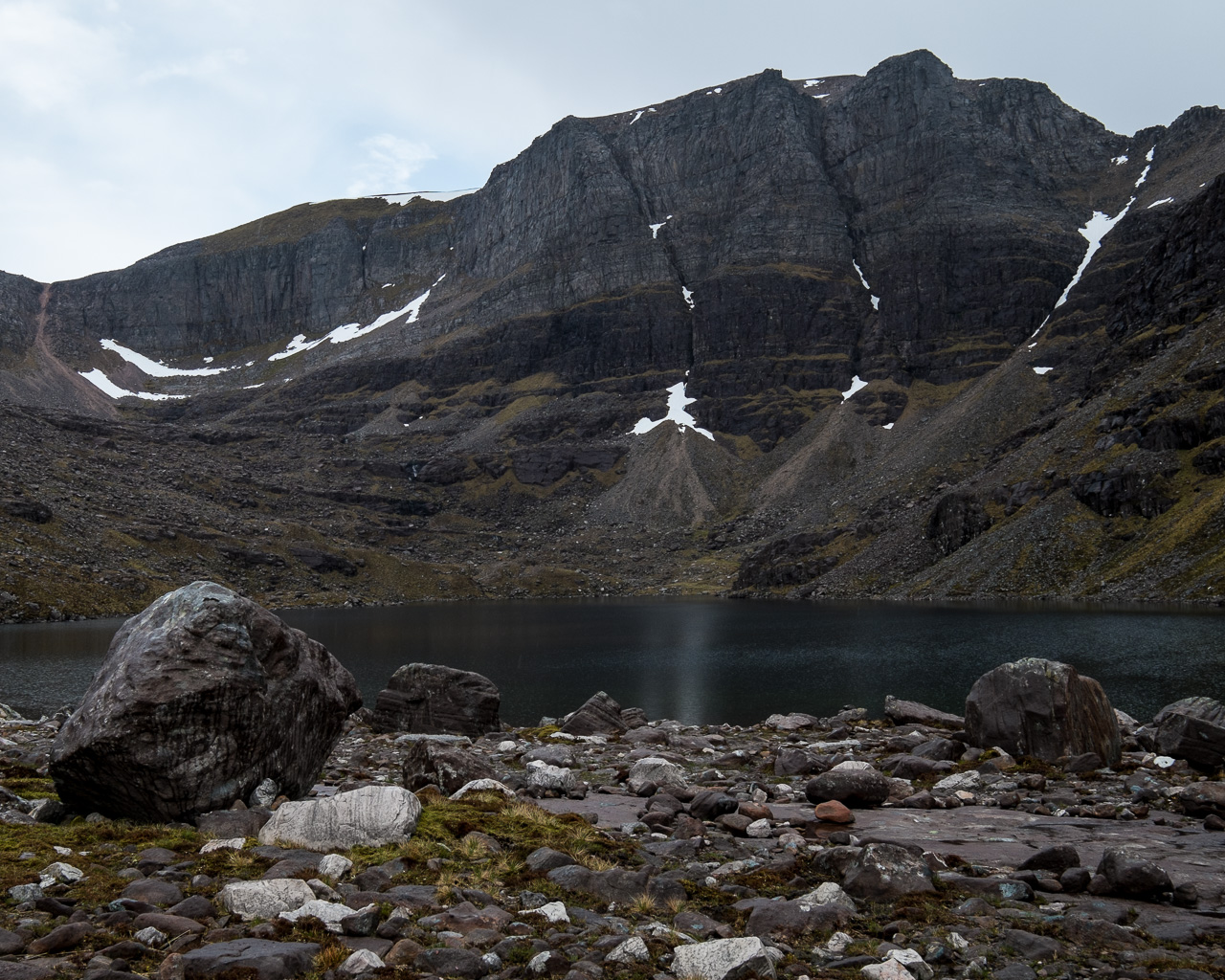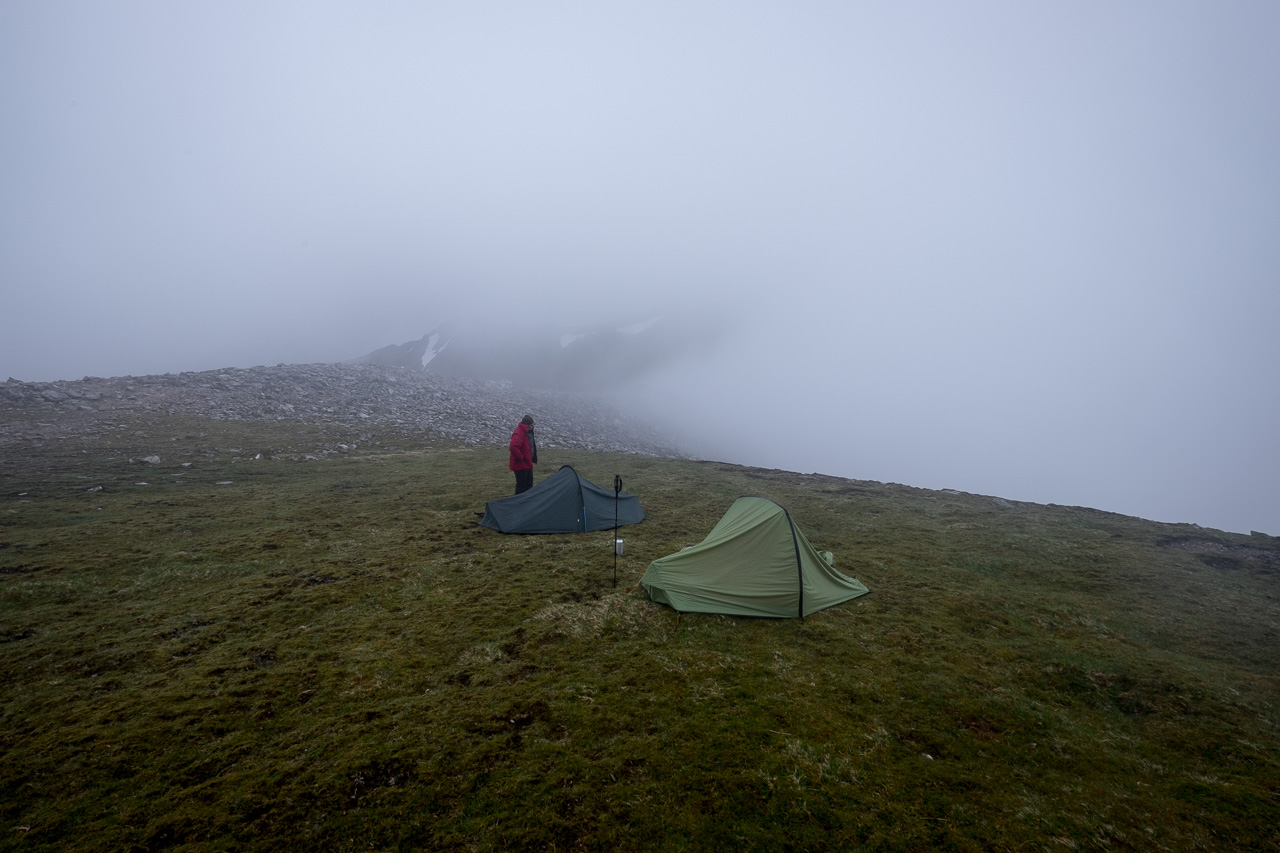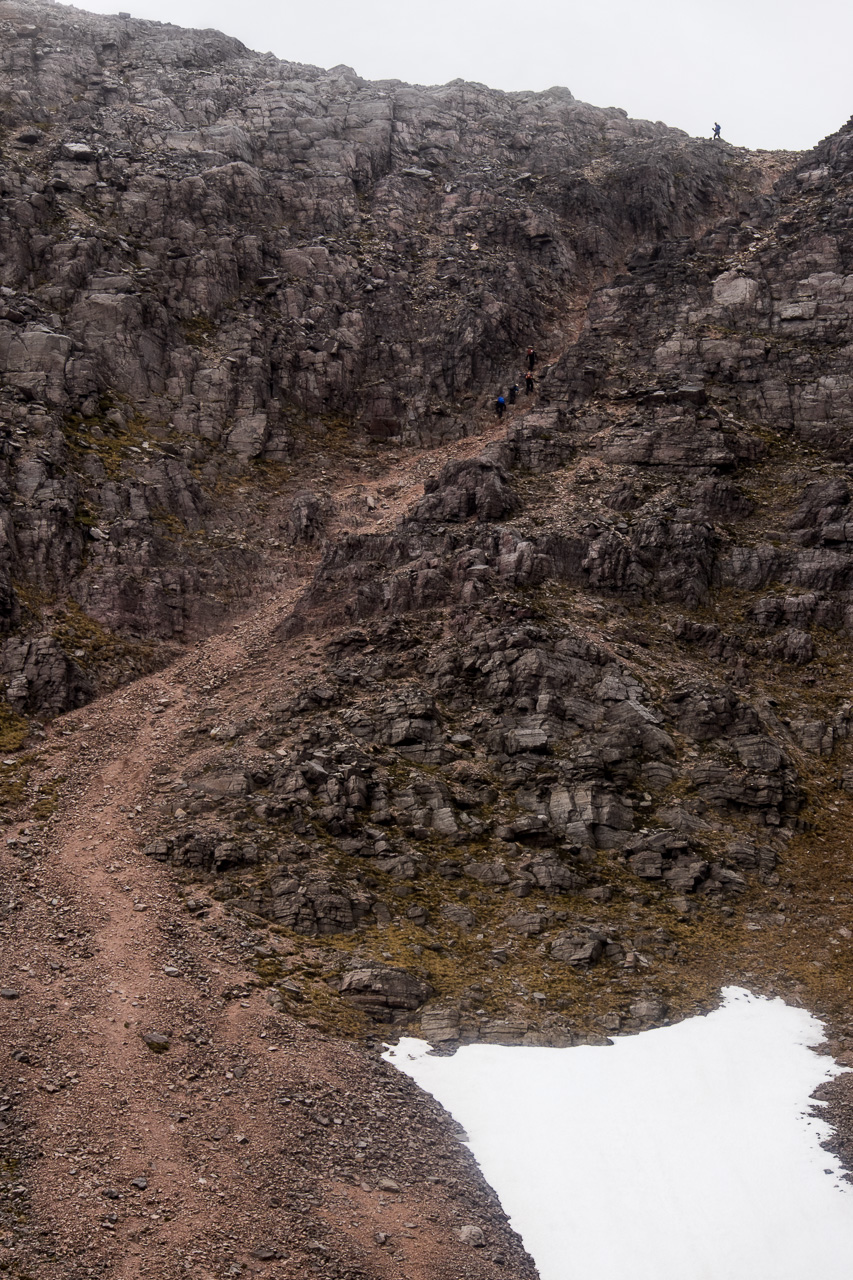I love the wild places but I’m certainly no mountaineer. I’m more of your downhill walker if you get my meaning. I wasn’t designed for ascending hundreds of metres and the low lying mountains and hills of the Peak District tend to give me a good enough workout thank you very much. But being in this wild mountain-scape it’s difficult to fully appreciate the landscape from the glens alone. To spend my time at low level would feel like I was only seeing and telling half the story.
The Plan
A while ago I was talking to my mate and fellow photographer Greg Whitton (aka @mountainman76 - the hint’s in the name!) over a beer or two about an intrepid wild camp on a mountain. Now that I’m in the area we - or rather he - decided that it should be on one of the Torridon Hills, with Beinn Eighe at 1010m being at the top of the list. Yes, you read that right. It’s over a kilometre high and the climb doesn’t start much above sea level.
The plan with a wild camp on a mountain is to witness a view that most people will never see and to see it in solitude. I suppose there are relatively few that climb such things and many fewer again that would camp on top of one. Seeing the sun set and rise from this altitude, red light flooding this seemingly endless mountain terrain with warmth was the plan.
Our ascent was to be from Glen Torridon, via Coire an Laoigh then up to the summit before following the ridge to the north-west for a camp on or around the grassy plateau of Coinneach Mhor.
Unfortunately the weather closed in around us as soon as we reached the minor summit of Stuc Coire Laoigh and stayed with us until we got into the car at the other end. I won’t give you a blow-by-blow encounter of the climb - there wouldn’t be much left to say once I edited out the swearing to be honest - but I’ll share some of the experience and thoughts about it with you.
The Gear
This isn’t a post about gear but when going long distances and camping at altitude you have to give it special consideration. My backpack of choice is F-Stop’s Tilopa BC. I am a huge fan of these packs for two key reasons - comfort and modularity.
By crossing the features of a regular hiking rucksack - such as internal frame, padded hip belt, multiple adjustment and suspension points - with a camera bag you get a camera bag that fits you very well and is comfortable to carry for a long distance. Most bags I’ve used in the past put all of the weight on your shoulders and back which become very painful over even short distances. With the internal frame supporting and distributing the pack’s weight, and then putting the weight on the hip via the belt there’s little discomfort over a long distance.
In terms of modularity, you can scale up or down the amount of camera equipment you carry by virtue of the removable Internal Camera Units (ICUs). These are like the innards of most camera bags with padded dividers to hold equipment. Coming in a variety of sizes, you can install a small one if you need to carry more ‘other’ gear than camera gear, or install a large one to maximise the camera equipment in the bag.
Of course on this occasion the trip demanded less camera equipment to make space for all of the camping gear so I used a Small Micro ICU. In the ICU I had a Fujifilm XT1 with XF10-24 attached, Fujifilm XE1 with XF18-55 attached and the Fujifilm XF55-200 lens.
This was packed inside alongside an F-Stop Elkhorn pouch, a Jetboil stove, food, windproof top, a change of clothes and my sleeping bag liner. The Elkhorn is a small accessory pouch that I use to store ‘bits and bobs’ - remotes, filters and holder, batteries and memory cards, lens clothes and such like.
Attached to one side of the pack was my tent and sleeping mat, and strapped to the other side was my Redged TSC-427K tripod (much lighter than my large Gitzo).
I didn’t weigh my pack but when fully loaded it must have been close to weighing 20kg. All I can say is thank goodness I wasn’t carrying my Canon gear - there’s a serious question mark over my ability to make it to the top if I had (that sounds melodramatic but it’s a serious weight difference when including tripod).
Climbing v Photography
I often find when in the midst of one activity it is difficult to switch your focus to another activity. Normally this means that I find long distance walking and photography incompatible, always thinking about the miles ahead rather than the photography at hand. I find that my process is distracted, hurried and often forced. Normally when I’m focused on my photography I will spend several hours in one location without another anything else entering my head.
Climbing a munro takes this to a whole new level! With a heavy pack, miles ahead of you and hundreds of metres above you the breaks tend to be short and you’re more worried about recovering your breath and your energy than making images. As it was we arrived at camp about an hour later than hoped, so there really wasn’t a lot of time to be methodical in our image making on the hike up.
The experience reinforces my personal view that the two activities are difficult companions. Of course if I was fitter - and Greg was very patient! - we’d have got up quicker and recovered sooner, and perhaps I’d worry about the miles less and the photography more.
Reactive Photography
The above doesn’t go to say that there weren’t photographic opportunities. Rather they were fewer and different than what we anticipated. There were certain moments - arriving at the first minor summit looking over to Liathach and the sun dancing on the sea to the Hebrides, brief glimpses of the landscape as the fog thinned and the sun burst through, descending below the fog on the last day - where I was compelled to make a photograph.
These were the moments where your heart skips a beat, the tired legs and miles to go are forgotten, and the pack is thrown down in urgent excitement. Quickly pulling the camera from the bag, everything is on autopilot, instinctively framing and exposing the shot. It’s times like these that all of the experience behind the camera really helps. Reacting to fast changing light is more akin to sports photography than to landscape photography, so often (wrongly IMO) stereotyped as a rather relaxing affair.
Of course these images could be stronger in terms of composition, sharpness, and so forth. I suppose you could spend a few hours sat on the ridge, in a cloud, camera mounted on the tripod and just wait for the moment. It may never come, or it may happen behind you. So fickle is the mountain weather that you never know. Perhaps you’d have a stronger technical image but to me it wouldn’t tell a true story.
Though far from being my best, for me at least the images from that climb up and along Beinn Eighe reflect the experience of being there, brief moments of minor magic and hold a sense of feeling. Others may think differently being divorced from the emotion of the experience itself and so they remain for me alone.
Expectations
Best laid plans and all that! Nobody climbs a munro hoping to sit in a cloud for 18 hours. Such is the way of things however. After such a tough hike having our plans for a wild camp so completely foiled by the mountain was very disappointing. The mountain doesn’t give up her secrets freely.
And so in microcosm we see the ongoing battle that we as photographers face with failed expectation. Hard work and even careful planning guarantee nothing, and we are at the whim of the landscape. All we can do is keep our chin up and keep putting ourselves out there. Today might not be our day but that day is coming and each failure feels like another step towards success.
Our expectations are so often overly demanding - or just plain false - and they can lead us astray. With the strenuous climb my photo mojo (phojo as I call it :)) was as low as my energy levels. When the conditions turned out to be much less than spectacular I most definitely teetered on the brink of throwing in the photographic towel. A stunning sunset from the summit would have reenergised me and got the phojo flowing like a torrent. As it was I was tired and down hearted that my efforts were not rewarded.
However there are always images to make, you just have to see them and feel them. Those moments of light through the cloud, that was the real story of the experience and perhaps the mountain itself. A clear sky and glorious red light may well have been altogether too benign considering I was standing a kilometre into the atmosphere. Often we try to turn the dramatic and ever changing landscape around us into a placid and beautiful scene, rather than focusing on the more real, visceral, and perhaps honest interpretation of these dangerous and foreboding places.
Don’t let your expectations get you down; change your expectations and open your eyes afresh to what’s around you.
Moisture Management
One of the biggest challenges I faced on this trip was regarding ‘moisture management’. It was damp for most of the trip, and the walk out was made in torrential rain. My pack’s rain cover blew away on top of Bleaklow a few months ago and I still hadn’t replaced it. Though quite weather resistant my pack became saturated over time and from then it seemed like everything just started to get wet.
The biggest problem this caused was with my camera equipment which fogged up and refused to clear up until we descended and had some brief moments of better weather. Not much good being on top of a munro when you can’t take any images because of condensation in your lenses. Of course given all we could see was fog perhaps this would have added to the effect!
Though the XT1 is weather sealed the lenses aren't. Not that weather sealing would prevent fogging, but it would help and from memory it hasn't beset my sealed Canon lenses before. It's knocked my trust in the gear a little for the time being.
Of course this isn’t a fault of the camera as such. Rather it’s for me to take responsibility and find solutions to keep the internals of the bag drier. As I speak a replacement rain cover has just arrived, and I’ve purchased several neoprene pouches to reduce the lenses’ exposure to the damp air. I’ll also be keeping a spare dry bag with me to put the ICU in during the worst conditions.
I’ll write more on the issue of moisture management in another post. In the meantime please don’t get complacent like me. If you're heading for the mountains give this issue some serious thought, particularly with equipment that isn’t weather sealed.
Wild Camping a Munro
I’ll make this brief. You have to carry a lot of stuff a long way up a big hill. It is hugely challenging and not to be taken on lightly.
But when you’re cooking on your stove, chatting with your pal, drinking a well earned whisky and all around you is wild silence? That is a very magical experience and one I shall remember forever. And I've completed my first (and second!) munros. That's very cool!
I’d just like to say a huge thanks to Greg for putting up with my slow pace and getting me to the top via his experience, good humour and the promise of whisky and chocolate. Top man! Now, seriously, can you carry my gear next time please?
